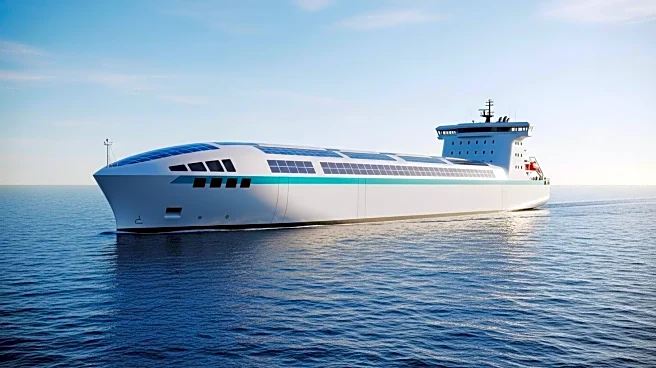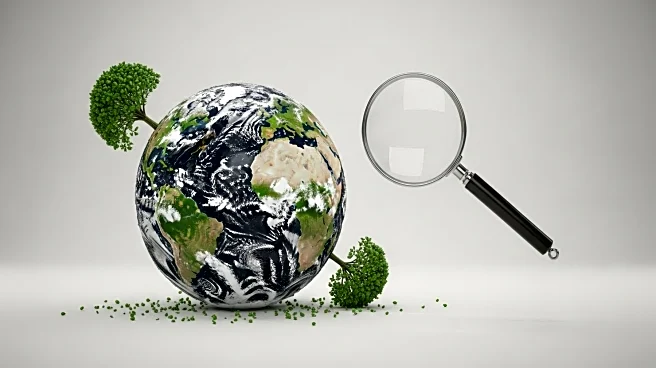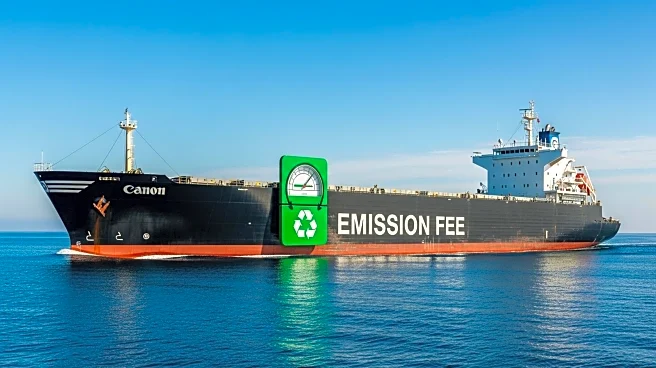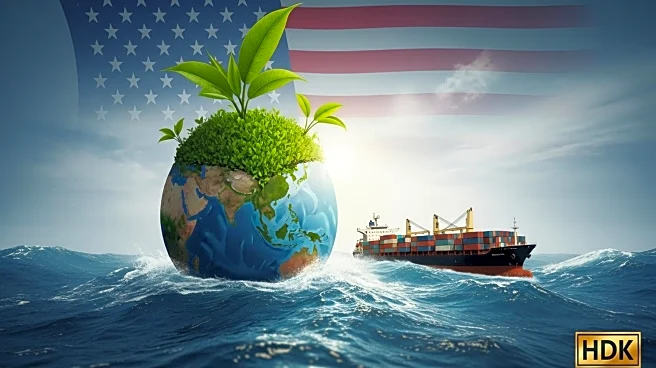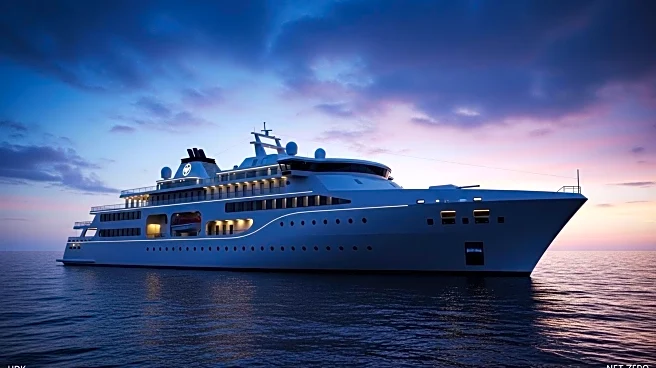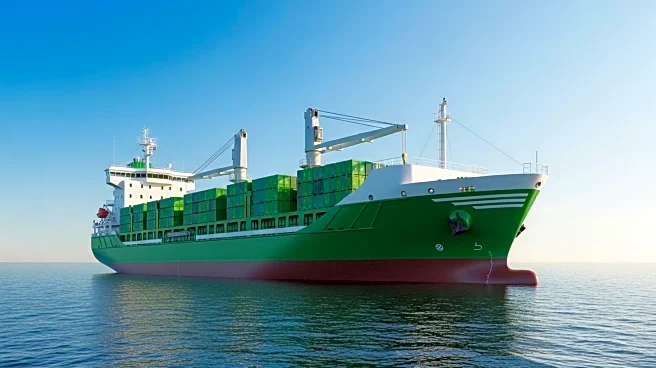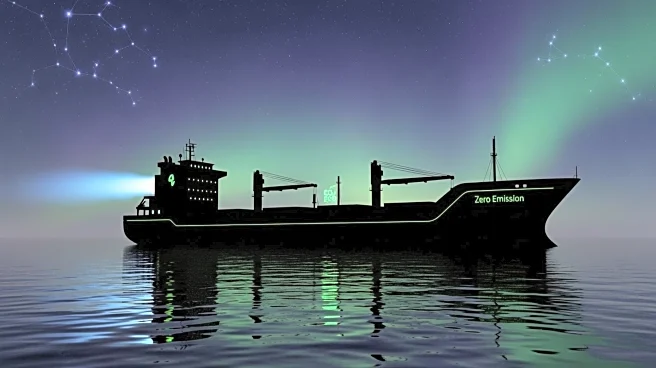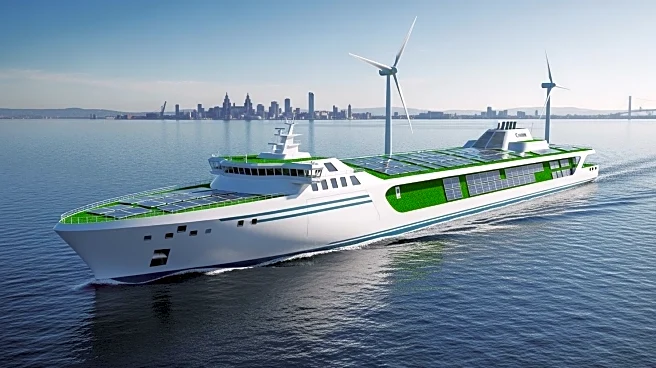What's Happening?
DNV has released the ninth edition of its Maritime Forecast to 2050 during the London International Shipping Week, emphasizing the shipping industry's transition from ambition to action in decarbonization efforts. The report highlights the increasing orders for dual-fuel vessels and the emergence of new technologies, although supply and infrastructure remain insufficient. Knut Ørbeck-Nilssen, CEO Maritime of DNV, identified geopolitical challenges, decarbonization, and technological advancements as key factors shaping the industry. The report also discusses the anticipated adoption of the IMO's Net-Zero Framework, which is expected to influence future regulations and fuel transitions. DNV proposes 'Carbon Capture Corridors' to reduce emissions by 20% through onboard carbon capture and offloading/storage capabilities in key ports.
Why It's Important?
The shipping industry's move towards decarbonization is crucial for meeting global environmental targets and reducing carbon emissions. The adoption of the IMO's Net-Zero Framework could double costs but is deemed manageable through strategic approaches. The industry's focus on zero-carbon fuels and technologies like carbon capture is essential for sustainable growth. The report's findings could drive investments in infrastructure and technology, benefiting stakeholders such as shipbuilders, operators, and environmental groups. The transition to cleaner fuels and technologies may also influence global trade patterns and regulatory frameworks.
What's Next?
The upcoming adoption of the IMO's Net-Zero Framework is expected to provide greater certainty to the industry, potentially spurring investments in necessary infrastructure and technology. DNV estimates that the Net-Zero Fund will receive $10 to $15 billion annually, which could significantly aid the industry's decarbonization efforts. The development of guidelines for fund usage and further research into carbon capture technologies are anticipated. Industry leaders may focus on adapting larger vessels to new standards, while addressing challenges related to supply and production capacity.

